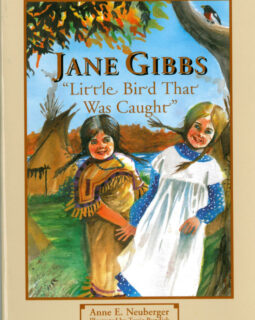Catalog
Ramsey County History – Summer 2000: “Plans for Preserving ‘Potters’ Field:’ – Heritage of the Public Welfare System”
Robert C. VogelPlans for Preserving ‘Potters’ Field:’—Heritage of the Public Welfare System Author: Robert C. Vogel In early 2000, a management plan was developed for the cemetery on the Ramsey County Poor Farm. The cemetery’s roots go back to 1895 when the county board of commissioners established a “potters’ field” for…
Ramsey County History – Spring 2000: “The Two Worlds of Jane Gibbs: The Gibbs Farm and the Santee Dakota”
Julie A. HumannThe Two Worlds of Jane Gibbs: The Gibbs Farm and the Santee Dakota Author: Julie A. Humann This article begins with how a young girl, Jane DeBow, and the Santee Dakota people came to know and learn about each other, starting in 1834 when she was living near the…
Ramsey County History – Spring 2000: “Gummy, Yellow, White Flint Corn—The Dakota Garden at the Gibbs Museum”
Janet CassGummy, Yellow, White Flint Corn—The Dakota Garden at the Gibbs Museum Author: Janet Cass At the Gibbs Farm, which was established by Jane and Heman Gibbs in 1849 outside St. Paul, the museum there offers a view of pioneer and native gardens side-by-side. These demonstration plots allow visitors to…
Ramsey County History – Spring 2000: “The Gibbs Farm, Its Neighbor, The University Farm, and How Both of Them Influenced Minnesota’s Agricultural History”
William F. Hueg Jr.The Gibbs Farm, Its Neighbor, The University Farm, and How Both of Them Influenced Minnesota’s Agricultural History Author: William F. Hueg Jr. The 160 acres of farmland acquired by Herman and Jane Gibbs in 1849 in Falcon Heights proved to be some of the most valuable acreage in the…
Ramsey County History — Winter 2000: “A Water Tower, a Pavilion and Three National Historic Sites: Clarence Wigington and the Architectural Legacy He Left to the People of St. Paul”
David Vassar TaylorA Water Tower, a Pavilion and Three National Historic Sites: Clarence Wigington and the Architectural Legacy He Left to the People of St. Paul Author: David V. Taylor Clarence Wesley “Cap” Wigington was the first licensed African-American architect in Minnesota, whose career with the City of Saint Paul extended for…
Ramsey County History – Spring 1999: Book Review
Ramsey County Historical SocietyBook Review Anne E. Neuberger, Jane Gibbs: “Little Bird That Was Caught,” with illustrations by Tessie Bundick (St. Paul: Ramsey County Historical Society, 1998). PDF of Book Review…
Jane Gibbs: Little Bird That Was Caught
Anne E. Neuberger, Illustrations by Tessie BundickIn 1834, five-year old Jane was placed into a covered wagon to travel with a family she did not know. The Stevens–a missionary family–took her through great woods and savannahs, boating across Lake Michigan and up rivers until they reached Minnesota. While the Stevens were building a log cabin, Jane…
Ramsey County History – Winter 1997: “‘Empty Nests’ and Tea at the Ramsey House”
Patsy Raudenbush‘Empty Nests’ and Tea at the Ramsey House Author: Patsy Raudenbush A mini-memoir of the author’s early marriage years, visiting the home of Unity Church’s pastor, Arthur Foote, and the Alexander Ramsey House, then still occupied by Ramsey’s granddaughters. PDF of Raudenbush, P. article…
Ramsey County History – Spring 1995: “What’s Historic About This Site? The Benjamin Brunson House and the East Side’s Railroad Island”
Ramsey County Historical SocietyWhat’s Historic About This Site? The Benjamin Brunson House and the East Side’s Railroad Island In 1855 or so pioneer surveyor Benjamin Brunson built a house overlooking Trout Brook. The neighborhood became known at Railroad Island. This is a brief story of the man, the house, and the surroundings.
